This blog is to empower Millennials, Generation Z and others to embrace sustainable choices this fall. Through thoughtful tricks and practical tips, we aim to inspire a shift towards conscious consumerism, fostering a more eco-friendly and stylish approach to the season's wardrobe choices. Join us for more sustainable and fashionable future every week!
Don't wanna be here? Send us removal request.
Text
CHEAPER? but is it worth it?
While H&M, forever 21, Zara, Cotton on and many more brands are fast fashion brand that really safe your pockets from spending money. Most clothing items in each of these brands have tops that cost...around $14-25 or pants ranging $30-45.

I myself before would shop for clothing items that cost around this price because what I truly wanted was way out of my price range so I would settle for the second next best thing. The clothing items would eventually show exactly why its price the way it is.Most of these tops would be stitched so uneven. They would start to unravel on the edges of the garment.
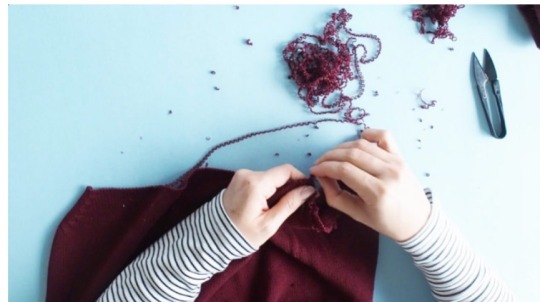
The jeans would eventually after every wear and use they would get so loose. The color of the garments would start to wash out and fade out. The garments would be okay to use for about 2-3 times before they completely start to look horrible. This would eventually make me realized that this was actually costing my pockets way more money that I really thought! These clothes would only last me a couple of uses and wear, I would find myself buying way more clothes because of this reason. I would spend so much money on clothes that would be useful in a couple of weeks. From this day on and forward I decided to change the way I shop for clothes. I began to do my research of brands that are sustainably and small business that I price but is made with great material and sewed correct that it will last me. I no longer shop at these fast fashion brands but actually business that focus on functionality and looks. I focus on finding great all time staple pieces of garments that will last me man many uses and wears in my closet.
For example, recently thrifted bag from a vendor who actually sets up at CSULB by the library. I always see all her clothes and items and I love them. Most of her items are from the 200's era, Y2K or vintage. On this particular afternoon i was already running for my class but I always check her out because she always has so many good items. I go and decide to check out all her bags and handbags, and i see the most beautiful handbag of Dooney & Bourke that's definitely from the 200's. It was in perfect condition, all zippers and clips work. It was authentic too! She was selling it for $80 bucks so i had to get its. This in my opinion was such a staple statement purchase because if i take care of the handbag it will last in my closet for a very long time, its colors are also so versatile it will match with a lot.
This also encourage me to motivate people around me to shop more ethically. While first definitely educating and showing them the big way that these fast fashion brands actually cause your pockets more money. I would ask the people around me how often they would wear a garment and most of them has the same responses as me. They would only use them two or three uses out of it before it was non-wearable. I began to let them know to just listen to me but dop research themselves. Overall, I think that's the best way to spread an awareness of shopping more ethically is by educating yourself on where your money is going at and if it's actually benefiting you. There is so many articles, websites and books that many people who love fast fashion can read up on and can Informs them of much useful knowledge. For instance, I really enjoy reading this one that has such detailed information.
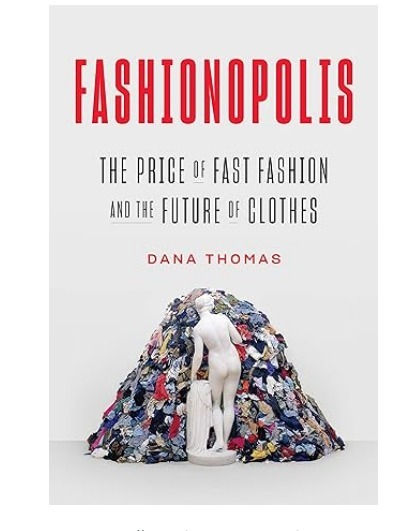
By starting with yourself and then spreading awareness will create a change in the fast fashion and save your pockets money!
By Esli Valencia.
0 notes
Text
Go green, even on your feet!
Most people think sustainability only comes down to the clothing pieces they're wearing. What is it made of? Where did it come from? Hardly anyone thinks about their shoes. Are their shoes sustainable? Are the rubber on their soles recycled? Or how is it being made? Who are the first hands making it and are they being taken care of?


Have no fear Fashion United shares the spotlight to a fully sustainable brand that thinks about all the quirks for a eco-friendly future. Grounded People is an "ethical footwear you can feel good about" (GroundedPeople.com). With Fashion United, the brand shares their ideology, mission and inside details how they operate the production side of goods.


Maximilian Justus, owner of Grounded People, started the brand with the intent to evolve from the typical labor practices, inclusivity and sustainability. One way Justus ensures the labor of its manufactures is by making trips to its manufacturer in Brazil. On these trips, he is attending to the factory environment and offering training to his employees. It is stated that the factories in the area, do not treat their workers with the basic hospitality. Justus is making a difference with care and providing preparations for the job.


The factory that makes Grounded People footwear uses only vegan materials. As well as, having an "extensive experience in producing vegan shoes for over ten years and continues to set the standard for ethical and sustainable manufacturing practices in the industry" (Preuss, How Grounded People is Changing the Fashion Industry, One Vegan Shoe At a Time). With this in mind, the factory only uses recycled materials during the footwear production.


Grounded People are willingly to share everything about themselves because they are ethically made and there is no hiding it. Could they be your alternative to converse? They are universal and better for our planet. Let us know which pair is in your shopping cart!


By: Emily Orozco-Zeledon
0 notes
Text
Is sustainable fashion breaking your budget?
Research has proven that Gen Z and Millenial consumers want more sustainable fashion brands that have a less harmful impact on the environment, but with societal costs rising, shopping sustainably is becoming near impossible for these younger generations.

The fashion industry is one of the most polluting industries to the environment. Trends are constantly changing and creating waste and chemicals and dyes used in the production process toxify the air. Sustainable fashion is meant to emphasize quality over quantity to create less waste, or generally reduce chemicals using calmer chemicals, reusing chemical baths, or using more natural dying methods.


Studies and surveys have continued to show that, if given the budget, consumers want to make. More recently, it was found that around 96% of younger consumers could not even afford to make eco-conscious decisions in the first place.

In every effort to move the fashion industry in a more sustainable direction, it was still found that 34% of Gen Z consumers and 47% of Millenial consumers still felt positively about fast fashion. Fast fashion garments are tagged with a cheaper price that seems more appealing to the consumer. A higher price upfront can be farther outside of a consumer's shopping budget. However, Higher quality garments would be considered more sustainable when you factor in their longevity and reusability.


With the recovery from the COVID-19 pandemic, society has seen a steady increase in prices within almost every market. The "cost of living" refers to the amount of money needed to sustain a specific living standard including basic necessities like housing, food, taxes, and healthcare. In California, the cost of living for 2023 is just under $45,000. With such high prices for basic needs, little money is left over for a consumer's "wants". It is also likely that some Millenials, and most of Gen Z's younger audience, don't even make that amount annually meaning they are still striving to achieve basic necessities and are not concerned with spending large amounts of money.


In recovery from the Coronavirus pandemic, the economy has been in an inflation gauge, which means luxury items are priced even higher, and excess inventory for retailers leads to quick markdowns. Apparel prices rose approximately 5.2% in June alone. The pandemic created a surge in consumer newness, trends became even stronger and more popular and lasted for shorter spurts of time adding to environmental waste. Shoppers are paying even more to maintain a "fresh" wardrobe. This means turning to the low prices on fast fashion websites because they seem more appealing.

Chloé was founded in France in 1952 and, since then, carried on a legacy of sustainability and femininity. Their goal is to create beautiful, quality products that have a meaningful impact on people and the planet. They are dedicated to finding alternatives and making changes to the company that better the environment while there's still time. By 2025, they plan to use 90% lower-impact materials in their collection. They are a B-certified company, meaning an outside source evaluated and assessed the company and its environmental impact. Chloé continues to be a brand promoting transparency and accountability and is a great brand for consumers looking for more sustainable pieces.

Messages about sustainability and bettering the environment are constantly drilled into the minds of young consumers, but current societal conditions don't allow this idea to translate into reality. Society's recovery from the lockdown of the Covid pandemic led to living cost and gradually rising prices. There are so many perks to purchasing sustainable fashion brands. In addition to supporting companies that aspire to better the environment and provide ethical working conditions, consumers can also acquire longer-lasting pieces and save more money in the long run through the garment's longevity and sustainability. Brands like Chloé continue to push for a more sustainable future and can be a great alternative for consumers.
0 notes
Text
This Fashion Revolution is Embracing all the Chaos
While minimalism has been a popular trend since the 1960s-70s, during the COVID-19 pandemic, minimalism in fashion skyrocketed. People were constantly in their houses meaning they wanted comfortable, safe clothes often directing the consumer towards loungewear. When the pandemic ended, my shoppers wanted to completely break free and reset; consumers were looking for the exact opposite of what they had known for so long. This meant they wanted eccentric, attention-attracting, show-stopping looks and while sustainable maximalism doesn't seem like a natural pairing, the trend is surely taking off.

Minimalism has previously been mentioned on our blog as a good option for users trying to increase sustainability. It's the idea that less is more, less items, less choices, less stress. Neutral colors in versatile basics that would make your life happier and more efficient. For a minimalist closet to work successfully, you need the right pieces for your specific lifestyle and attitude.
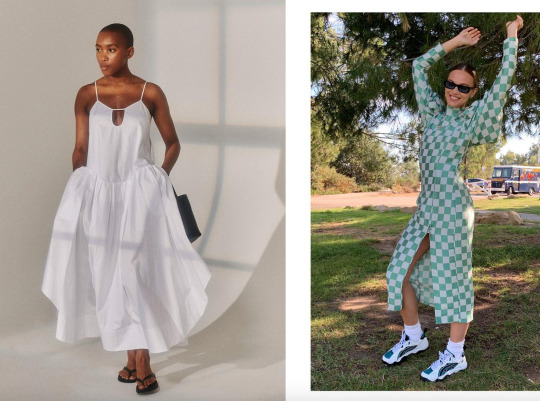
Minimalism, shown above on the left is represented with a white dress. Minimalistic trends display versatile pieces with neutral colors and clean lines. There is a relaxed, comfortable feeling around the aesthetic. Followers of minimalism are conscious about what's in their closet and emphasize quality and craftsmanship to create a cohesive look. Maximalism, on the other hand, is shown through bold, bright prints and colors. There are vibrant directional shifts and followers seem to be more "go-with-the-flow" and have a deeper understanding of fashion elements in order to create a cohesive look.

The words "sustainable maximalism" don't typically go hand-in-hand. The concepts are natural oxymorons but fashion influencers have been breaking the rules. Maximalist wardrobes are often created from majorly secondhand pieces. Consumers want unique, thrifted pieces that won't be in everybody's collections. Followers are reminded to shop within their own closets and see what can be styled or changed. Many users have even taken up an entrepreneurial aspect of the industry as an additional perk. Many maximalist fashion consumers discuss trading forums or selling platforms like Depop and Poshmark, that have taken off along with the trend.
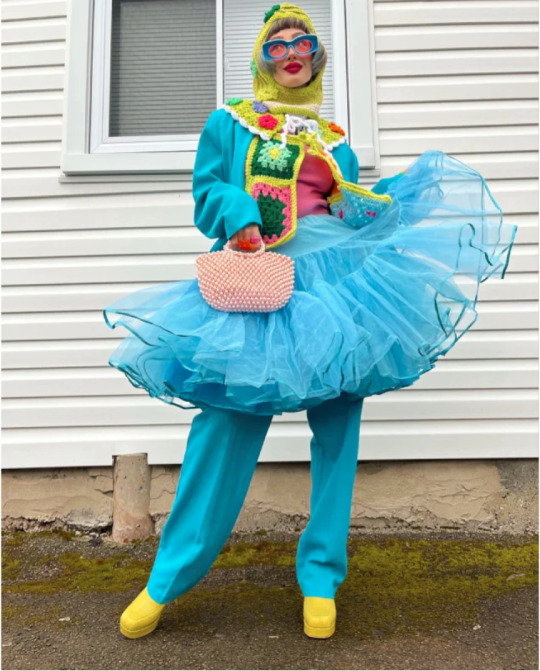
Typical characteristics of this newer maximalist aesthetic include bright bold colors and prints. It's common to see wild layering and pattern clashing and consumers even repurpose items like skirts to wear again as a skirt. Subtrends of this increasing maximalism aesthetic include clown core, which has an emphasis on clown and circus material, kid core which holds a high nostalgia factor, and even clutter core which fills space in an eclectic yet cohesive manner.


Meet influencer Alix Scherer. Alix began her maximalist journey shortly after beginning an office job. She described herself as having a creative side and needing an outlet for this self-expression. She describes her style as colorful business casual and has a dressier style that contains bold, bright colors, mixed prints, chunky jewelry, sequins, and tulle. She is out of the box and doesn't conform to the rules set by society, she encourages others to do the same.


Meet influencer Sara Camposarcone. She is a top maximalism influencer on the TikTok platform. She describes her style as weird, eccentric, eclectic, and nostalgic. She enjoys layering and is drawn to color because she says it boosts her mood. Inspiration for these creative looks comes from 90s runways and Japanese magazines.


Maximalism and minimalism are two completely opposite ends of the spectrum. While sustainability is typically tied to minimalistic trends millennial and Gen Z influencers are coming in loudly and proudly with their maximalistic wardrobes and still making a change. There are several different ways to structure and maintain a wardrobe, a consumer simply has to find the choice that works for their lifestyle. It's exciting that these maximalistic trends are emerging because they seem more fun and easygoing. It'll be interesting to see how these trends alter the future of the fashion industry.
0 notes
Text
Super Kardashian to the Rescue!
Is it Kimmy? Kourt? Khloé? Kylie or is it Kendall who is coming in to transform Fast Fashion?
Fast Fashion, as we know it, will always be topic of discussion. According to Vice, more than 10,000 clothing items are found in landfill in the United Kingdom. In comparison, United States holds about 40 times the population than United Kingdom, now imagine how many garments are thrown away here. It is massive in numbers.


The biggest reason for this, brands are moving at the speed of light to maximize each micro-trend with easy sew-by garments. There are many fast fashion brands that come to mind that are quick producers and consumers #1 favorite. In fact, BooHoo is a fast fashion ecommerce site and has teamed up with Kourtney Kardashian-Baker to create a sustainable collection. Is this a fancy celebrity to create more sales, or is there purpose behind it?


Kourtney Kardashian-Baker has been called out many times for going beyond her water usage limit in the past year. However, Kourtney has always changed her ways immediately after. In actuality, Kourtney has been making improvements to move and live better for a brighter future. Due to this new collaboration, there has been blackslash stating that this would be impossible to create. How will fast fashion become sustainable?


Kourtney Kardashian-Baker disclosed to InStyle, she thinks the blacklash is exactly what the brand needs to prove everyone wrong. The company and influencer are incorportating recycled cotton and recycled PCU. On top of this, the influencer wants to throw in vintage pieces into the mix. This effort is giving fabric and clothing another shot at life. In process of, creating this collection, Kardashian-Baker insists that the process has made her shift the way she shops for herself. She is also move towards sustainable garments and thinking, "Can I wear this more than once?". This thinking alone, is showing in her collection. She, too wants her customers to think the same.



Like they say… If you can't beat them, join them. Kourtney Kardashian-Baker is definitely making noise and changing fast fashion for what we think it is and towards, what it can be. Will you be shopping the latest collection?

By: Emily Orozco-Zeledon
0 notes
Text
Why is it important for Gen Z and Millennials to stop shopping fast fashion for our future and future generations?
According to , MIDIP (Multidisciplinary Digital Publishing Institute website states that “the fashion industry is the second most polluting of all industries.", yet Gen Z and millennials are still consuming fast fashion increasingly till this day.
For example, INDYX website says that “Gen-Zers seem to be the biggest advocates for sustainable fashion and simultaneously the biggest consumers of fast fashion “. In fact, in a 2020 survey done by Vogue Business they found results that “more than half of its Gen Z participants bought most of their clothes from fast-fashion brands, like H&M, Gap, Zara and Forever 21. Market research firm Mintel has reported that Gen Z, generally seen as those born between 1997 and 2010, also buys more clothes than older generations, with the average Gen-Z owning hundreds of dollars' worth of outfits that never get worn at all. It’s a trend that analysts say is fueled by a social media culture that pressures youth and young adults to never wear the same outfit twice.” So why is it important for Gen Z and millennials to stop supporting these fast fashion brands?
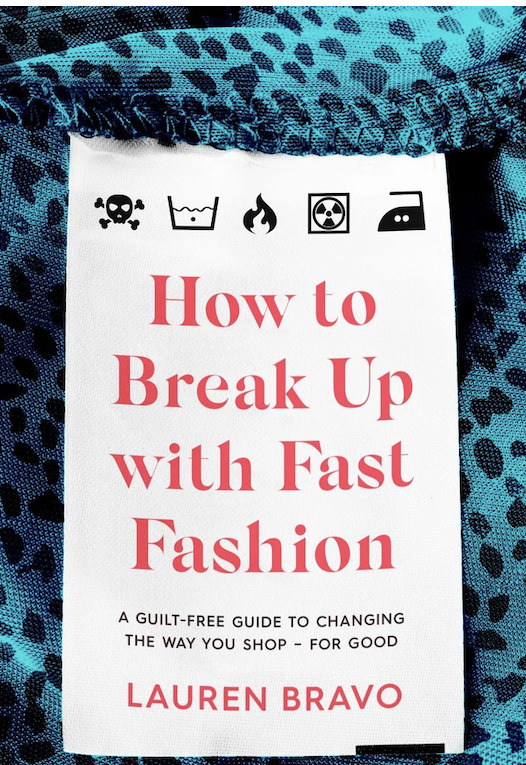
Well according to journalist Eve Upton-Clark from Insider article that “As Gen Zer's get older, richer, and make up more of the fashion industry's market share, their habits have the potential to affect the industry for good — or ill. And pushing the fashion industry to be more sustainable is key in the fight against climate change: At our current rate, the fashion industry is on track to consume 26% of the world's carbon budget by 2050. And clothing production contributes 20% of all global wastewater, with an anticipated 50% increase in greenhouse-gas emissions from industry by 2030.”
So how can Gen Z and millennials stop shopping fast fashion so there can be change for upcoming future generations. Most of these changes can start I believe with Gen Z influencers who truly do influence many of these young consumers. Instagram, Tik Tokers and in general social media influencers who have such a large following always promote fast fashion brands like Shein, forever 21, Fashion Nova by stopping to support them.
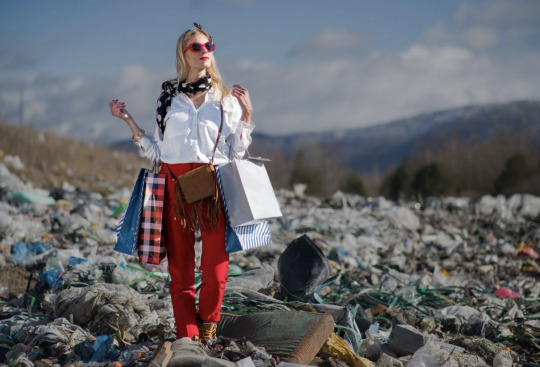
As proof, trying to test this method out one of the famous influencers Nava Rose who is a Tik Tok influencer with 6 million followers teamed up with thredUP to give Gen-Zer's and Millennials a better way of shopping.

Forbes says “Together, Rose and thredUP are launching “The Dump Fast Fashion Shop.” (The resale giant is nothing, if not blunt.) “This unique storefront will offer consumers the chance to thrift Rose’s looks by using thredUP’s What They Thrifted tool, which uses AI to display hundreds of items on thredUP that resemble Rose’s thrifted picks,” She even agreed and pledged to not support any “ultra-fast fashion this year". Nava Rose even went out of her way and even made a Tik Tok video where she is apologizing “to her almost 6 million followers for her contributions to the fast fashion industry and explained how she had excused her beliefs through living an otherwise eco-conscious life, such as having a worm compost”.
Nava Rose committing to end consuming fast fashion her followers will follow in her footsteps. This hopefully inspires many more influencers who have a big platform to start shopping more ethically and eco-friendly but also just inspires people in general to start thinking of the long run damage that fast fashion will cause in the future years to come and change only starts with us Gen-Zers and Millennials first. I suggest you go through your closet and reconsider if your shopping habits are helping reduce the pollution that fashion is causing it or increasing it? and if it is to find better ways to change it.
By : Esli Valencia.
2 notes
·
View notes
Text
Are younger generations steering the fashion industry in the wrong direction?
Are consumers actually willing to pay for more environmentally friendly clothing? Studies done at Cornell University actually say no. Constantly, in each survey and study, Gen Z claims, more than any other generation, that they want to purchase more sustainable fashion. However, it's being uncovered that younger consumers are not actually willing to monetarily support these morals and they are still the biggest segment of the population purchasing fast fashion. The two biggest barriers stopping them are believed to be cost and strong social media influences.


Cost is typically a big factor when thinking about a sustainable, more environmentally friendly lifestyle. There is generally a higher quality behind those products and, therefore, a higher price. Younger generations are already seeing a lower income, and, most likely hold more payments for optional things like rent, school, car, hobbies, etc. The sustainable alternatives are seen as too expensive for the lifestyle of these younger generations and if these young adults don't have the purchasing power they need, there's going to be a trade-off along the way between quality and price.

Social media influencers and advertisements are constantly showing users the trendiest clothes often for the lowest price. This completely simplifies the shopping experience for the consumer and adds an entirely new level of ease and convenience. In fact, many younger consumers even claimed to feel addicted to the experience of online shopping with fast fashion retailers. With apps, rewards, points, and even at times "free store cash" it's easy to look at the experiences as more of a game than a shopping experience.


While the purchasing habits might not reflect the most sustainable values, younger generations have adopted many habits that ultimately extend the life of garments. The recommerce industry has seen a jump in recent years as consumers have shown more care and respect toward their clothing in general. Many younger consumers have transitioned to thrift shopping and donating clothing which keeps things in that reusable cycle. Many consumers have even revived the creative arts of sewing, mending, crocheting, and knitting to repair or even create clothing from scratch.

Where do older generations fit into this debate about sustainability? Older generations, who have the purchasing power to support environmentally friendly values, also generally don't. There is less of a disconnect between their words and actions and they were less inclined to care about the environment in general compared to younger generations. Older consumers were also more likely to donate used items and play into the reusable fashion cycle but less likely to continue it and purchase used merchandise.


There's a mix of opinions about the buying habits of the younger generations and consumers seem very indecisive in the eyes of scientists. Millennials and Gen Z tend to gravitate towards sustainable habits in the fashion cycle, but maybe not as much in their purchasing habits. One thing is for certain, brands should be sure to keep up with the purchasing power and needs of these consumers or they will quickly fall behind.


- Caroline Osorio
0 notes
Text
Can you break free from the trend-trap?
or will you continue to be the problem?
Fast-fashion is moving vigorously fast through Generation Zs' pockets. As quickly a trend appears, a swipe of the card goes, and the old fab in the trash. This pattern is repeated more times a human can count and, filling up landfills like no tomorrow. According to Sustainable Fashion Forum, Gen Z are going against their values of supporting sustainability and going straight to fast-fashion for many reasons. Gen Z resort to fast-fashion for the affordable prices, variety of sizing, influence of social media, and not knowing where to buy ethical clothing.

As the leaves change colors and fall is approaching, lets learn how to take the first step into sustainability with our fall wardrobe. We turned to Good On You for tricks and tips on making a capsule wardrobe. Now, one might think, what is a capsule wardrobe?

A capsule wardrobe is a few selected garments to be mix and match with timeless pieces and a few exciting garments. Good On You expressed some staple pieces must-haves, and we will go through each one with recommended ethical brands to cop the same attire.
1. Short & Long Sleeves: Pact.com with tees starting at $24 or 3 for $60

Steep & Cheap: Longsleeves starting at $10.80

2. Sweater or Cardigans: Kotn with sweaters starting at $48

3. Windbreaker, Trench Coat or Any Outerwear: The Northface sale at $45

The Northface with Hoodie at $59.00

4. Tights, Jeans or Pants: Dorsu sweatpants starting at $46

5. Neutral Belts/Shoes: Madewell with belts from $48

6. Knitted Accessories: Boody with beans at $37.95

Let us know if you'll be the adopting the capsule wardrobe in the comments below!
By: Emily Orozco-Zeledon
1 note
·
View note